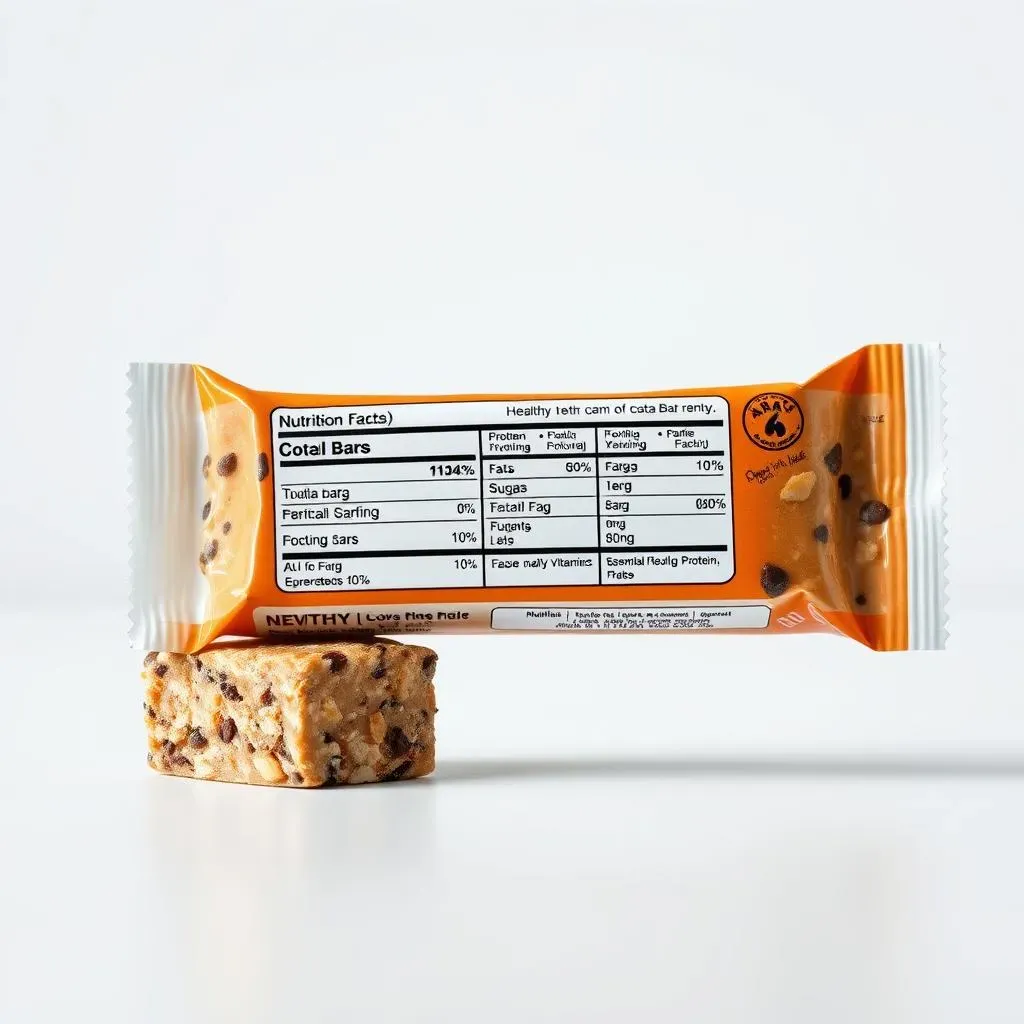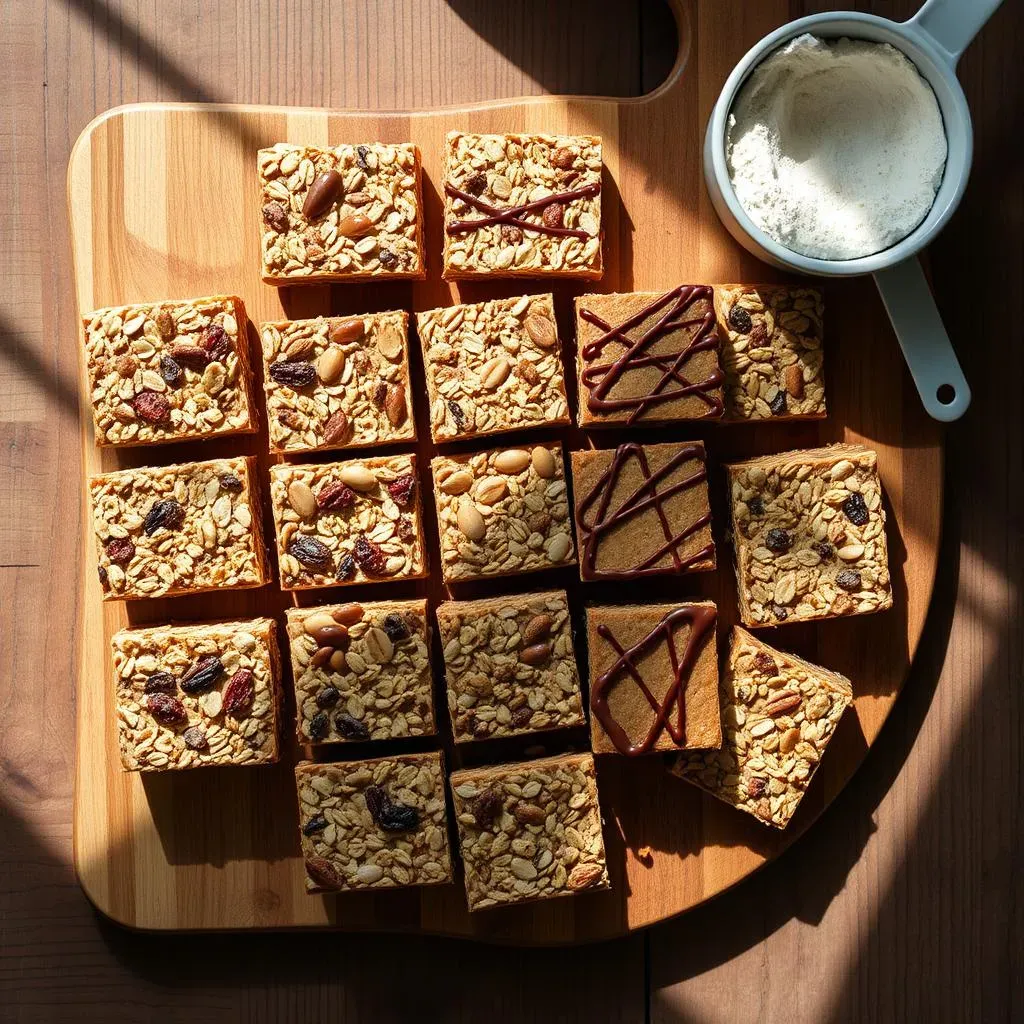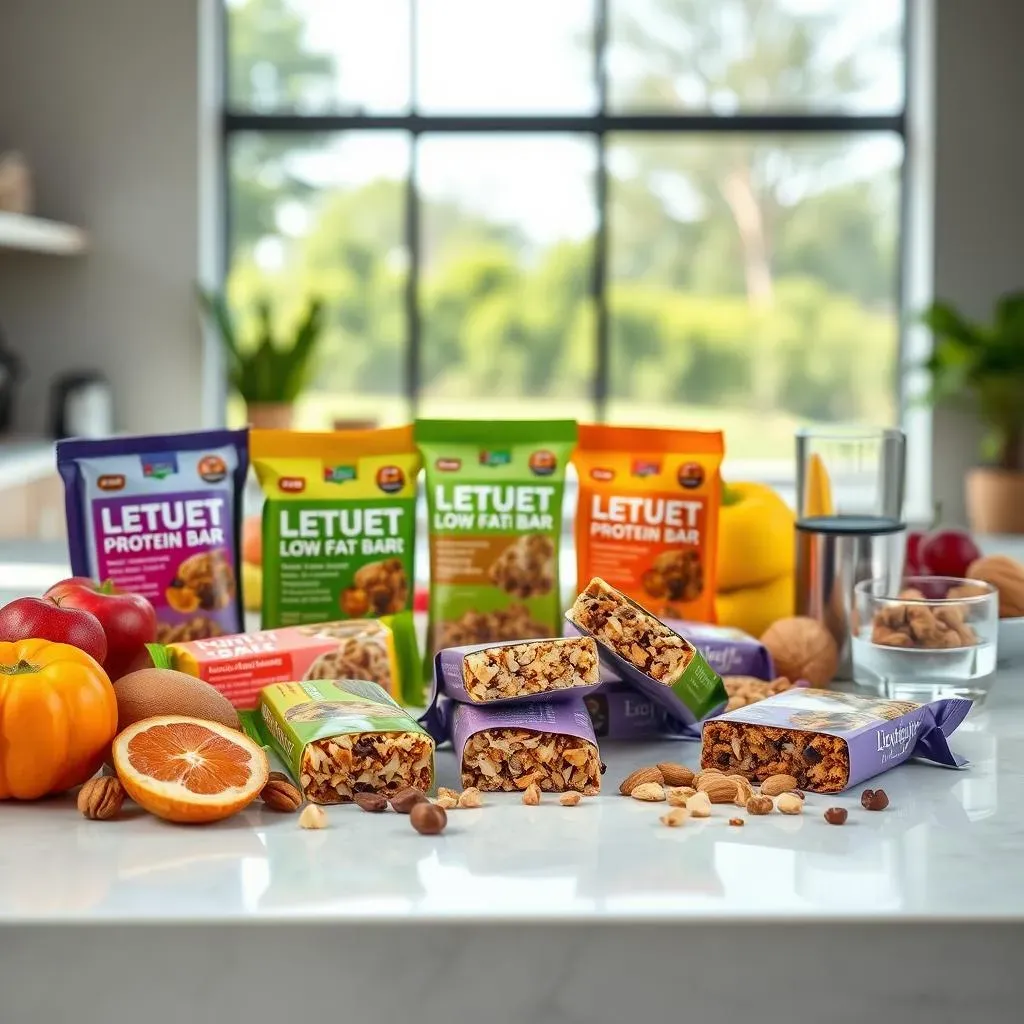Table of Contents
Are you tired of protein bars that taste like chalk and leave you feeling sluggish? Do you crave a convenient, healthy snack that supports your fitness goals without sabotaging your diet? Then you've come to the right place! This article is your ultimate guide to navigating the world of healthy low fat protein bars. We'll explore everything you need to know to make informed choices, from understanding nutrition labels and identifying the best-tasting options to discovering simple homemade recipes and integrating these bars into a balanced diet. Forget the confusing jargon and misleading marketing – we’ll demystify the process of selecting the perfect healthy low fat protein bars for your lifestyle. Get ready to discover delicious, nutritious snacks that truly fuel your body and satisfy your taste buds. We'll cover everything from deciphering confusing nutritional information on labels to finding the perfect bar for your taste and dietary needs. We'll even share some exciting homemade recipes, so you can take control of your ingredients and create your own perfect healthy low fat protein bars. By the end of this article, you'll be confident in choosing and incorporating these bars into a healthy and balanced lifestyle. Let's dive in and unlock the secrets to finding the perfect healthy low fat protein bars for you!
Decoding the Nutrition Labels of Healthy Low Fat Protein Bars

Decoding the Nutrition Labels of Healthy Low Fat Protein Bars
Understanding Protein Content
First things first: look for the total protein grams per bar. Aim for at least 10 grams, but remember that your individual needs will vary based on your activity level and goals. Don't just focus on the total grams though; check the *type* of protein as well. Whey protein is a popular choice, but many people prefer plant-based options like soy, pea, or brown rice protein. Each has its own nutritional profile, so choose the one that aligns best with your preferences and dietary needs. For example, some people find whey easier to digest than soy.
Want to learn more about specific types of protein? Check out our guide on high-protein, low-fat bars for a deeper dive into protein sources.
Protein Type | Pros | Cons |
|---|---|---|
Whey | High bioavailability, fast digesting | May cause digestive issues in some |
Soy | Complete protein, affordable | May contain allergens |
Pea | Hypoallergenic, sustainable | Can have a slightly chalky taste |
Scrutinizing Fats and Sugars
Next, examine the fat content. "Low-fat" doesn't mean zero fat, and some healthy fats are actually beneficial. Look for bars with less than 5 grams of total fat per serving, and pay attention to the *type* of fat. Saturated and trans fats should be minimized, while unsaturated fats (like those found in nuts and seeds) are good for you. Too many saturated fats can be bad for your heart. Consider making your own bars with controlled fat content using our low-fat protein bar recipe.
Sugar is another crucial factor. Many protein bars are loaded with added sugars, which can negate the health benefits. Ideally, aim for bars with less than 5 grams of added sugar per serving. Remember, natural sugars from fruits are different from added sugars. Always check the ingredient list – sometimes added sugars hide under different names!
- Check total fat content
- Minimize saturated and trans fats
- Look for unsaturated fats
- Limit added sugars
Fiber, Carbs, and Other Essentials
Don't forget about fiber! Fiber is essential for digestion and keeping you feeling full and satisfied. Look for bars with at least 3 grams of fiber per serving. Also, consider the total carbohydrate content. While carbs provide energy, excessive amounts can hinder your weight loss goals. Finally, glance at the vitamin and mineral content. Some bars are fortified with additional nutrients which can be a bonus. For example, some bars are a good source of iron and calcium.
Remember, a healthy low-fat protein bar is part of a balanced diet. Don't rely on them as your sole source of nutrition. If you are looking for low-carb options, check out our selection of low-carb, low-fat protein bars.
Finding the Best Tasting Healthy Low Fat Protein Bars for Your Needs

Finding the Best Tasting Healthy Low Fat Protein Bars for Your Needs
Taste Preferences: A Personal Journey
Let's face it: the best healthy low fat protein bar is the one you actually *enjoy* eating! Forget those bland, chalky bars from the past. Today's market offers a huge variety of flavors, from classic chocolate and peanut butter to more adventurous options like salted caramel, cookies and cream, and even fruity combinations. Don't be afraid to experiment and find what suits your palate. Think about your favorite desserts or candy bars – are there similar protein bar options?
Many brands offer sample packs or smaller sizes, allowing you to try several flavors before committing to a larger purchase. This is a great way to discover your new favorite snack! If you're struggling to find something you love, consider exploring our best low-fat, high-protein bars for a wider selection.
- Chocolate
- Peanut Butter
- Cookies & Cream
- Salted Caramel
- Fruit Flavors
Texture Triumphs: Chewy, Crunchy, or Creamy?
Texture plays a huge role in our enjoyment of food. Protein bars can range from soft and chewy to crunchy and crumbly. Some people prefer a melt-in-your-mouth experience, while others crave a satisfying crunch. Consider your preferences and look for bars that match your ideal texture. Do you prefer a dense, fudgy bar or something lighter and airier?
It's also worth noting that texture can sometimes be affected by storage conditions. Bars that are too hard or dry might have been improperly stored. Always check the "best by" date and store your bars according to the manufacturer's recommendations. For those wanting to control texture completely, check out our low-fat protein bar recipe to make your own.
Texture | Description | Example Flavors |
|---|---|---|
Chewy | Soft, pliable, and slightly sticky | Brownie, cookie dough |
Crunchy | Crisp, with a satisfying snap | Nut clusters, granola |
Creamy | Smooth, rich, and decadent | Peanut butter, chocolate |
Dietary Needs and Preferences: Finding Your Perfect Fit
Beyond taste and texture, your dietary needs and preferences are paramount. Are you vegan, vegetarian, or do you have any allergies or intolerances? Many brands now cater to specific dietary restrictions, offering gluten-free, dairy-free, soy-free, and even nut-free options. Check the ingredient list carefully to ensure the bar meets your requirements.
Some people prefer bars with minimal ingredients, while others don't mind added sweeteners or other additives. Consider your priorities and choose a bar that aligns with your values and health goals. If you're on a low-carb diet, explore our range of low-carb, low-fat protein bars to find the perfect fit. Remember, the best bar is the one you'll stick with!
Healthy Low Fat Protein Bars: Recipes and Homemade Options

Healthy Low Fat Protein Bars: Recipes and Homemade Options
Taking Control: Why Make Your Own Bars?
Let's be honest, store-bought protein bars can be a minefield of hidden sugars and artificial ingredients. Making your own gives you complete control over the ingredients, ensuring you're consuming only what you want. You can adjust the sweetness, protein content, and add-ins to perfectly match your taste and dietary needs. Plus, homemade bars are often cheaper than store-bought ones, especially if you buy ingredients in bulk. It's a surprisingly simple process, and the satisfaction of creating your perfect snack is unbeatable!
Need a little inspiration? Our low-fat protein bar recipe is a great place to start. It provides a delicious base recipe that you can easily customize.
- Control over ingredients
- Cost-effective
- Customization options
- Sense of accomplishment
Basic Recipe Blueprint: A Simple Starting Point
A basic low-fat protein bar recipe usually involves combining a protein source (whey, soy, pea protein powder, or even nut butter), a binding agent (oats, dates, or nut butter), and a sweetener (honey, maple syrup, or stevia). You can then add various mix-ins like nuts, seeds, dried fruit, or chocolate chips to enhance the flavor and texture. Remember to adjust the proportions to create the desired sweetness and consistency. For example, adding more oats will create a chewier bar, while adding more nut butter will result in a richer, denser bar.
Looking for more low-carb options? Check out our collection of low-carb, low-fat protein bar recipes for some delicious alternatives.
Ingredient | Function | Alternatives |
|---|---|---|
Protein Powder | Provides protein | Nut butter, Greek yogurt |
Oats | Binding agent, adds fiber | Almond flour, coconut flakes |
Sweetener | Adds sweetness | Honey, maple syrup, stevia |
Creative Customization: Unleash Your Inner Chef!
Once you've mastered a basic recipe, the possibilities are endless! Experiment with different flavor combinations, add-ins, and sweeteners to create your signature bars. Think about your favorite desserts and see if you can adapt them into a healthy low-fat protein bar. You can add spices like cinnamon or nutmeg for warmth, or experiment with different types of nuts and seeds for added texture and flavor. The key is to have fun and let your creativity shine! Don't forget to consider the nutritional impact of your additions – for example, some nuts and seeds are higher in fat than others.
Remember to always store your homemade bars properly to maintain freshness and quality. An airtight container in the refrigerator is usually best. For even more inspiration, check out our guide to the best low-fat, high-protein bars—you might find some ideas you can adapt!
The Role of Healthy Low Fat Protein Bars in a Balanced Diet

The Role of Healthy Low Fat Protein Bars in a Balanced Diet
Smart Snacking: Fueling Your Body the Right Way
Healthy low-fat protein bars aren't meant to replace meals; they're designed to supplement a balanced diet. Think of them as smart snacking tools to help you manage hunger, boost protein intake, and avoid unhealthy cravings. They can be particularly useful between meals or after a workout when your body needs a quick energy boost and protein for muscle recovery. They're not a magic bullet, but a helpful addition to a well-rounded approach.
Remember, a balanced diet includes a variety of nutrient-rich foods, such as fruits, vegetables, lean proteins, and whole grains. Don't rely solely on protein bars for your nutritional needs. For more ideas on healthy snacks, check out our guide to low-calorie, high-protein snack bars.
- Supplement, not replacement
- Useful between meals
- Supports muscle recovery
- Part of a balanced diet
Portion Control and mindful eating: Avoiding Overconsumption
Even healthy snacks can contribute to weight gain if consumed excessively. Pay attention to portion sizes and listen to your body's hunger cues. Just because a bar is "healthy" doesn't mean you should eat two or three at a time. Be mindful of your overall calorie intake and aim for moderation. Remember, the goal is to use these bars strategically to support your health and fitness goals, not to overindulge.
It's also important to be aware of the other foods you're consuming throughout the day. If you're already getting plenty of protein and fiber from your meals, you might not need a protein bar. Consider your total daily intake before adding a bar to your routine. If you are watching your carb intake, you might want to check out our range of low-carb, low-fat protein bars.
Serving Size | Approximate Calories | Protein (grams) |
|---|---|---|
1 bar | 150-250 | 10-20 |
Beyond the Bar: Integrating into a Holistic Lifestyle
Incorporating healthy low-fat protein bars into your lifestyle is about more than just snacking; it's about making mindful choices that support your overall well-being. Consider your activity level, dietary needs, and personal preferences when selecting a bar. Remember to factor in your other food choices and overall calorie intake. A holistic approach to health includes regular exercise, adequate sleep, and stress management, in addition to a balanced diet.
Ultimately, the best approach is to find a balance that works for you. Experiment with different bars, recipes, and strategies to determine what best supports your individual needs and preferences. Don't be afraid to try new things and find what you enjoy! For more ideas on creating a balanced diet, check out our recipes for low-fat, low-sugar protein bars.
